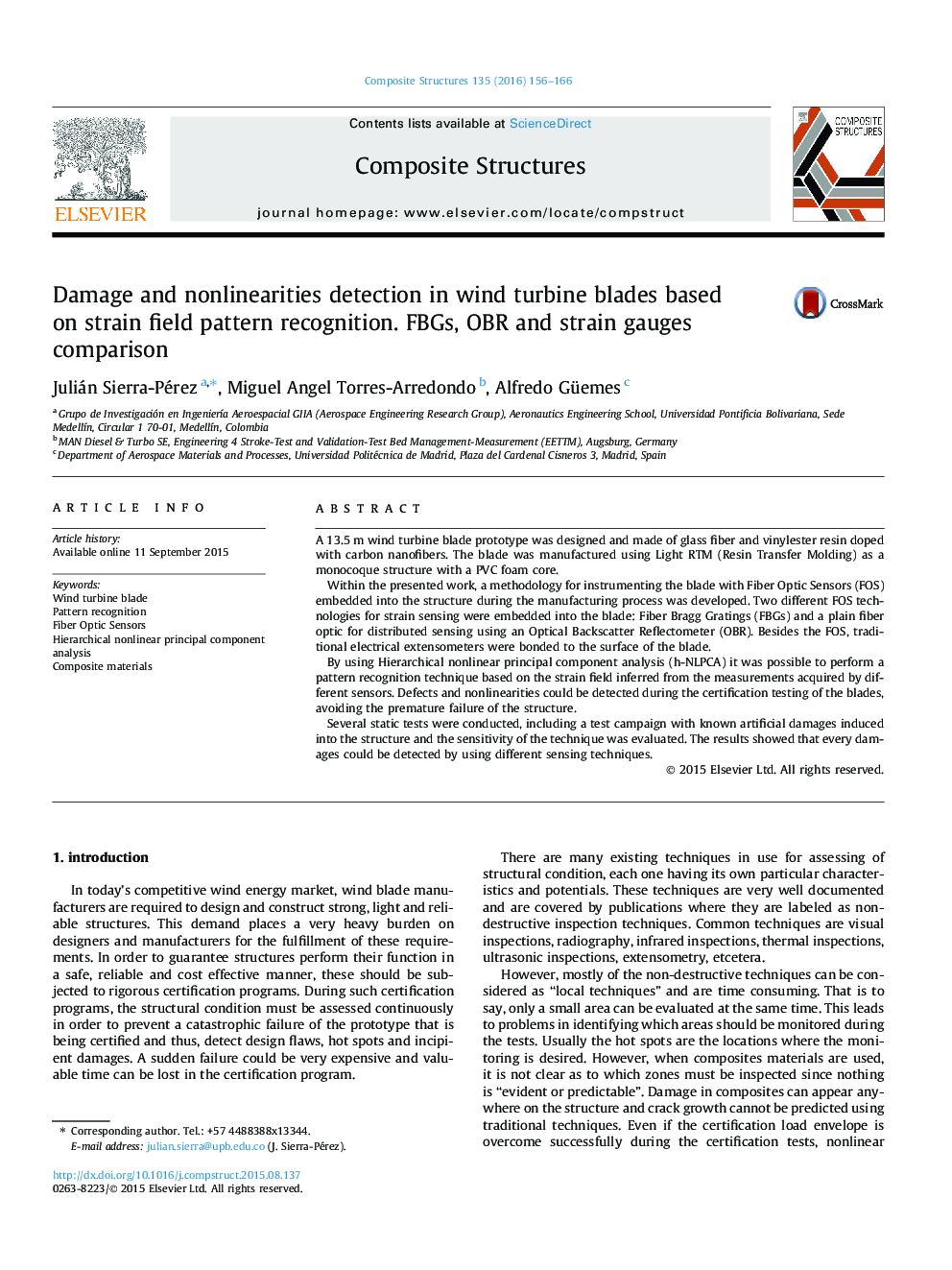| Article ID | Journal | Published Year | Pages | File Type |
|---|---|---|---|---|
| 251175 | Composite Structures | 2016 | 11 Pages |
A 13.5 m wind turbine blade prototype was designed and made of glass fiber and vinylester resin doped with carbon nanofibers. The blade was manufactured using Light RTM (Resin Transfer Molding) as a monocoque structure with a PVC foam core.Within the presented work, a methodology for instrumenting the blade with Fiber Optic Sensors (FOS) embedded into the structure during the manufacturing process was developed. Two different FOS technologies for strain sensing were embedded into the blade: Fiber Bragg Gratings (FBGs) and a plain fiber optic for distributed sensing using an Optical Backscatter Reflectometer (OBR). Besides the FOS, traditional electrical extensometers were bonded to the surface of the blade.By using Hierarchical nonlinear principal component analysis (h-NLPCA) it was possible to perform a pattern recognition technique based on the strain field inferred from the measurements acquired by different sensors. Defects and nonlinearities could be detected during the certification testing of the blades, avoiding the premature failure of the structure.Several static tests were conducted, including a test campaign with known artificial damages induced into the structure and the sensitivity of the technique was evaluated. The results showed that every damages could be detected by using different sensing techniques.
